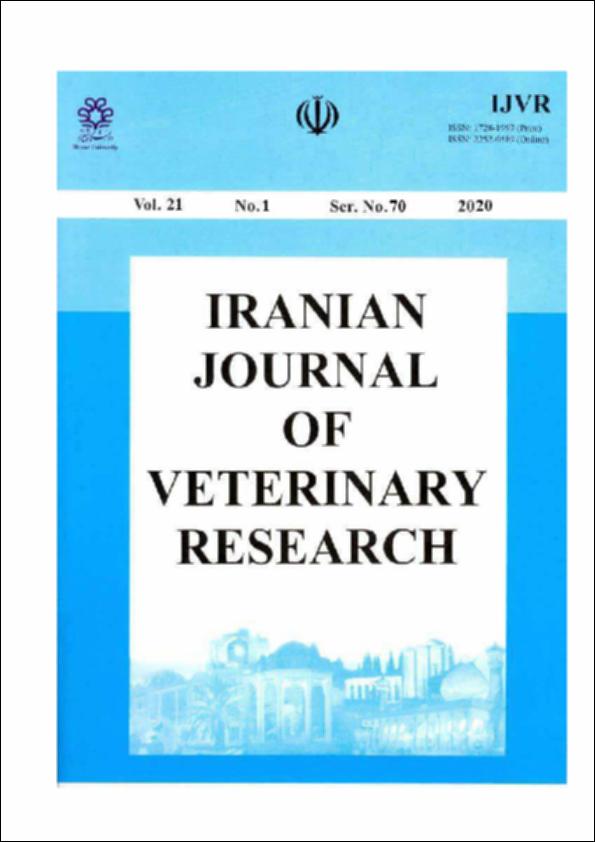Por favor, use este identificador para citar o enlazar este ítem:
http://hdl.handle.net/10637/12872Clinical and laboratorial description of the differential diagnoses of hemostatic disorders in the horse
| Título : | Clinical and laboratorial description of the differential diagnoses of hemostatic disorders in the horse |
| Autor : | Satué Ambrojo, Katiuska Gardon Poggi, Juan Carlos Muñoz Juzado, Ana |
| Materias: | Horses - Hematology.; Caballos - Hematología.; Veterinary hematology.; Hematología veterinaria. |
| Editorial : | Shiraz University, School of Veterinary Medicine. |
| Citación : | Satué, K., Gardon, J., Muñoz, A. (2020). Clinical and laboratorial description of the differential diagnoses of hemostatic disorders in the horse. Iranian Journal of Veterinary Research, vol. 21, i. 1 (jan.), pp. 1-8. DOI: http://dx.doi.org/10.22099/ijvr.2019.31826.4784 |
| Resumen : | The process of fibrin clot formation is a series of complex and well-regulated reactions involving blood vessels, platelets, procoagulant plasma proteins, natural inhibitors, and fibrinolytic enzymes. Vasculitis can be caused by a variety of different agents as bacteria, viruses, protozoal, rickettsial organisms, toxic, drugs, medications, and neoplasms. The most common cause of vasculitis is the purpura hemorrhagica, which is associated with exposure to Streptococcus equi ssp. equi or less commonly, equine influenza. Deficiencies or defects of the hemostatic components may result in bleeding and/or thrombosis. Inherited alterations of primary hemostasis (von Willebrand disease: vWD and Glanzmann’s thrombasthenia: GT) and of secondary hemostasis (hemophilia A and prekallikrein: PK deficiency) are scarcely reported in equine clinic. On the contrary, acquired alterations of primary and secondary hemostasis are commonly found. They include thrombocytopenia, platelet dysfunction due to the administration of some drugs and targeted antiplatelet agents, decreased factor synthesis (liver disease or deficiency of vitamin K), release of inactive factors, inhibition of factor activity, or excessive consumption and depletion of factors (platelets, coagulation factors, and anticoagulants factors as antithrombin (AT) and protein C). Disseminated intravascular coagulation (DIC) is the most common and complex hemostatic disorder in horses and appears to be associated with sepsis, inflammatory and ischemic gastrointestinal tract disorders and other systemic severe diseases. These alterations are commonly found in patients in intensive care units. |
| Descripción : | Este artículo se encuentra disponible en la siguiente URL: https://ijvr.shirazu.ac.ir/article_5399_3cc0ca08dda95c802dd9ae406f6b464c.pdf |
| URI : | http://hdl.handle.net/10637/12872 |
| Derechos: | http://creativecommons.org/licenses/by-nc-nd/4.0/deed.es |
| ISSN : | 1728-1997. 2252-0589 (Electrónico). |
| Fecha de publicación : | 15-ene-2020 |
| Centro : | Universidad Cardenal Herrera-CEU |
| Aparece en las colecciones: | Dpto. Medicina y Cirugía Animal |
Los ítems de DSpace están protegidos por copyright, con todos los derechos reservados, a menos que se indique lo contrario.


